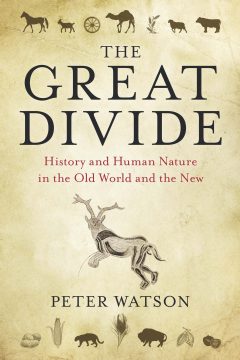The Great Divide

The Great Divide identifies and describes a totally new period in history. That period is 15,000 BC to 1500 AD. In, roughly speaking, 15,000 BC, early mankind, who had evolved in Africa tens of thousands of years before, arrived in Siberia, during the Ice Age. Because so much water was locked up in the ice, the world’s oceans were much lower than they are today, and early humans were able to walk across the Bering Strait, then a land bridge, without getting their feet wet, and enter the Americas. Then, shortly (in geological terms) afterwards, the Ice Age came to an end, the Bering Strait re-filled with water, and the humans in the Americas were cut off from the humans elsewhere in the world. This division - with two groups of people in the world, each oblivious of the other - continued until Christopher Columbus ‘discovered’ America in 1492.
This is the subject of The Great Divide, which compares and contrasts the development of humankind in the ‘Old World’ and the ‘New’ between 15,000 BC and 1500 AD. It is a very revealing comparison, with some important similarities and many startling differences which, taken together, help explain what it means to be human. The book offers a masterly and totally original synthesis of archaeology, anthropology, geology, meteorology and mythology, to give a new shape to human history.

